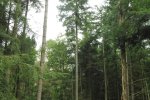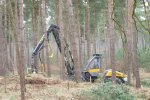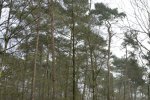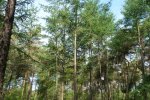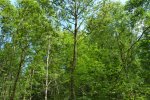
Project
Optimizing thinning for quality timber
This study aims to investigate the growth response of trees to various degrees of crown liberation as well as the effect of such treatment on the stand’s increment as whole. Scots pine (Pinus sylvestris), Douglas fir (Pseudotsuga menziesii), Japanese larch (Larix kaempferi), Beech (Fagus sylvatica), Birch (Betula pendula) and Oak (Quercus robur) have been selected for this study. These species are common and important timber species in the Netherlands and diverge in characteristics (i.e. shade tolerance). Allowing for an analysis of tree response between species and between traits. Finally for each species the goal is to determine the financially optimal thinning strategy to produce high quality timber.
Production of quality timber is often seen as an alternative to bulk, expecting that a possible loss in volume production will be compensated by better timber prices while also enabling the forest manager to use other tree species. However, strategies for producing stems of superior quality vary from slow and moderate release of future crop trees to free growth strategies where every crown competitor is removed, both extremes claiming to lead to the best timber characteristics.
This PhD focuses on the tree and stand growth under a future crop tree thinning regime and seeks answers to the question how to best treat a stand when the production of quality timber is the aim. The response of a future crop tree to different crown release strategies and the effect of such a treatment on a stand as a whole is the focal point of this study. A forest growth model will be developed to simulate stand development under various future crop tree thinning strategies to predict the effects of such treatment on volume production and economic benefit. Analysis of these results should lead to insight in what thinning strategy can best be applied to produce quality timber for selected tree species used in Dutch forestry.

